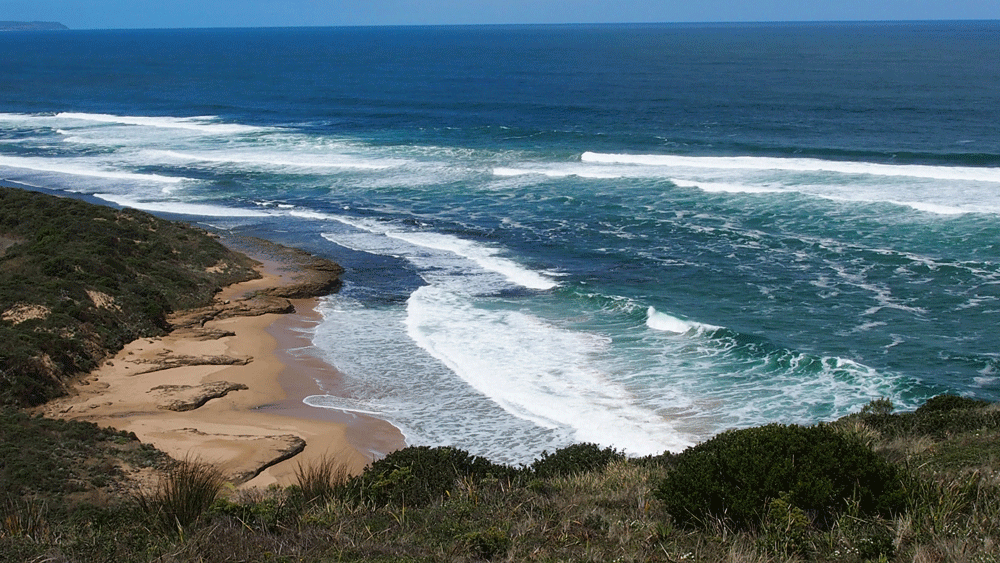
Both Leptospermum scoparium and Leptospermum polygalifolium (in particular) can be found over a diverse range of sites within the scope of their natural distribution.
Both can be found in profusion in front-line coastal habitats whether it be in Queensland or southern Victoria or places beyond and in between. The above photograph is of Bass Strait in Southern Victoria, one of the wildest and most inhospitable coastlines anywhere.
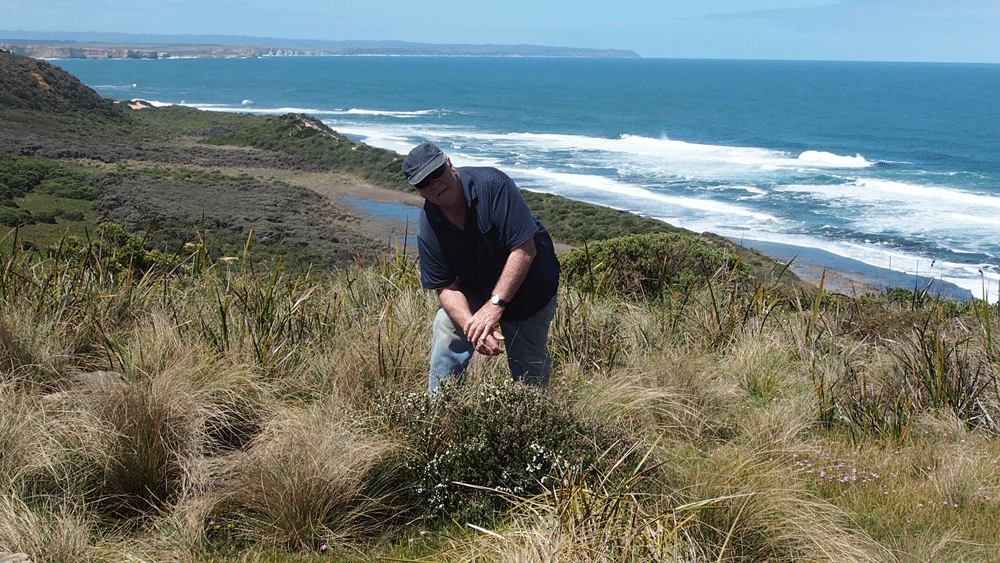
Same place, same view and wild Leptospermum scoparium in flower and continually trimmed by the wind.
It needs to be emphasised that both Leptospermum scoparium and Leptospermum polygalifolium grow best in coastal and sub-coastal locations where there is an abundance of soil moisture including seasonal inundation such as can often be found in infertile coastal heathland.
These plants will not thrive in dry coastal environments with low rainfall.
Where the conditions are favourable, these plants can thrive close to the coast.
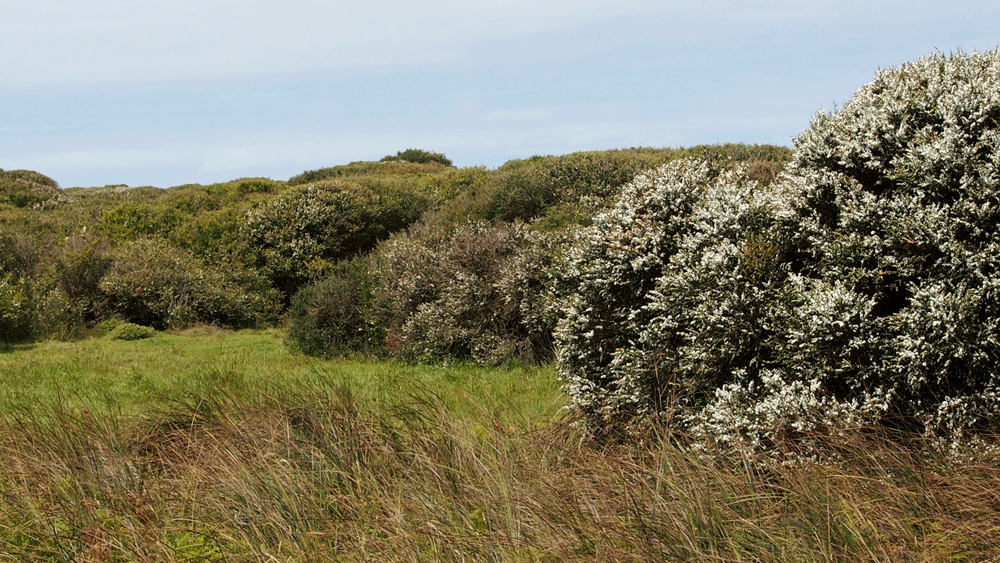
Leptospermum scoparium in flower growing in coastal seasonally inundated, infertile heathland 600m from the sea. The plant on the RHS is around 4m high by 5m across. Note that individual plants flower at different times within a 60-day total flowering period.
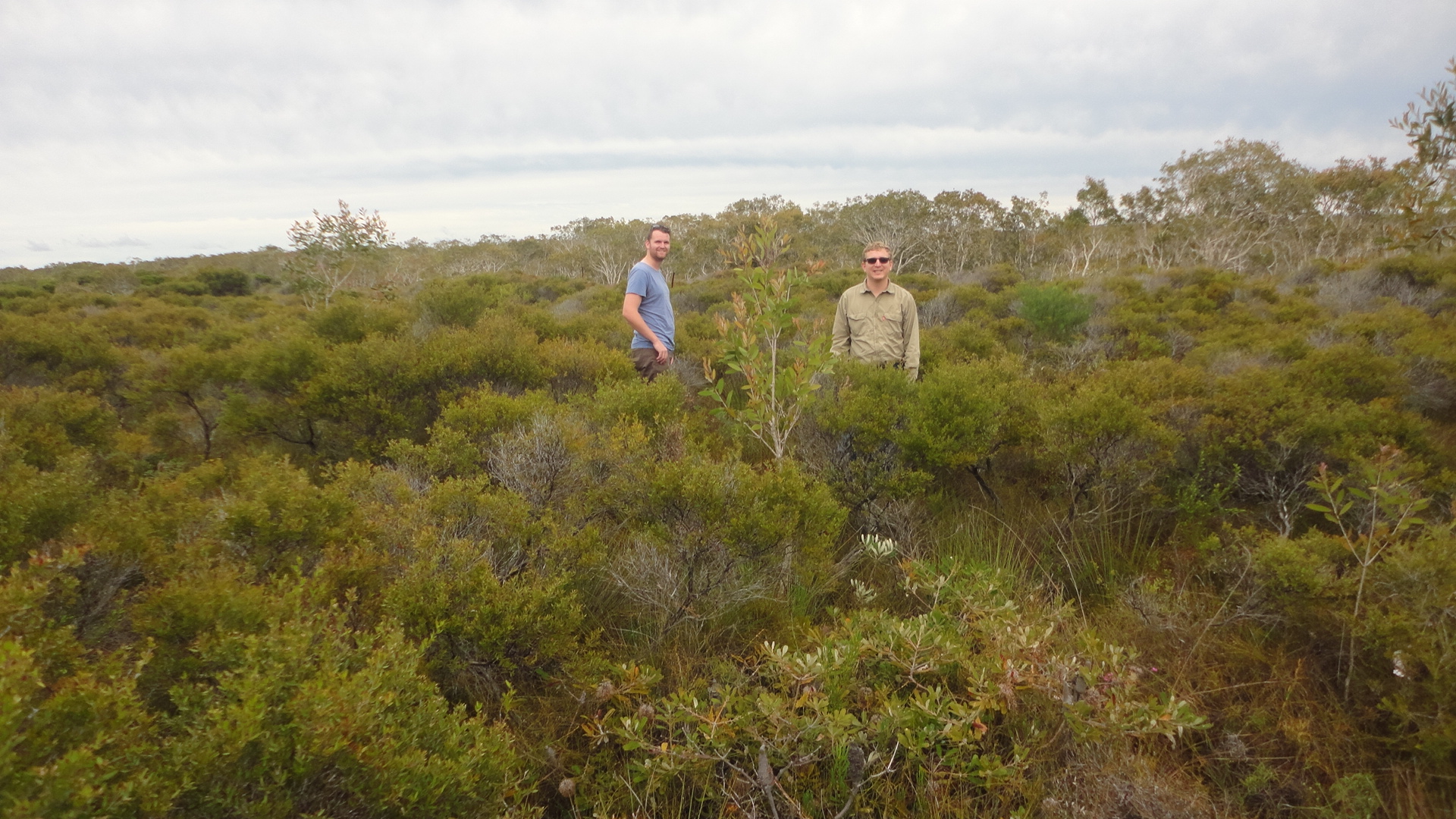
Seasonally wet coastal heathland in the Noosa (QLD) hinterland. The dominant species here is Leptospermum whiteii
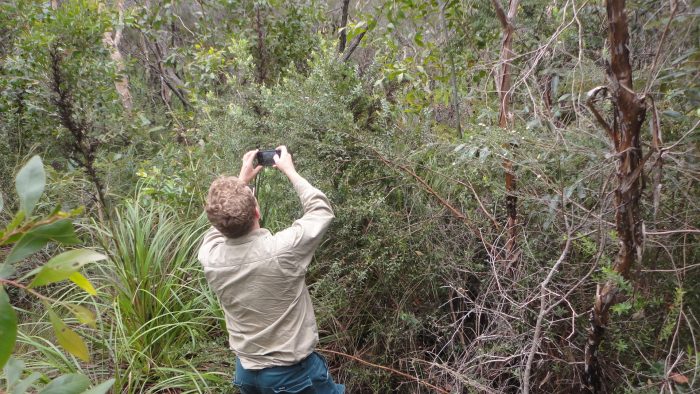
Leptospermum speciosum uncommonly in adjoining sub-coastal woodland